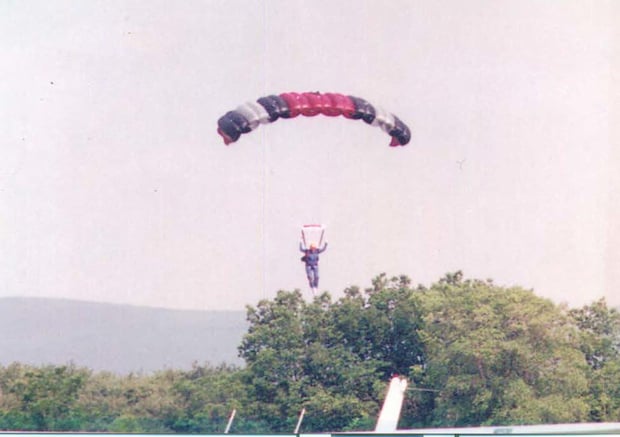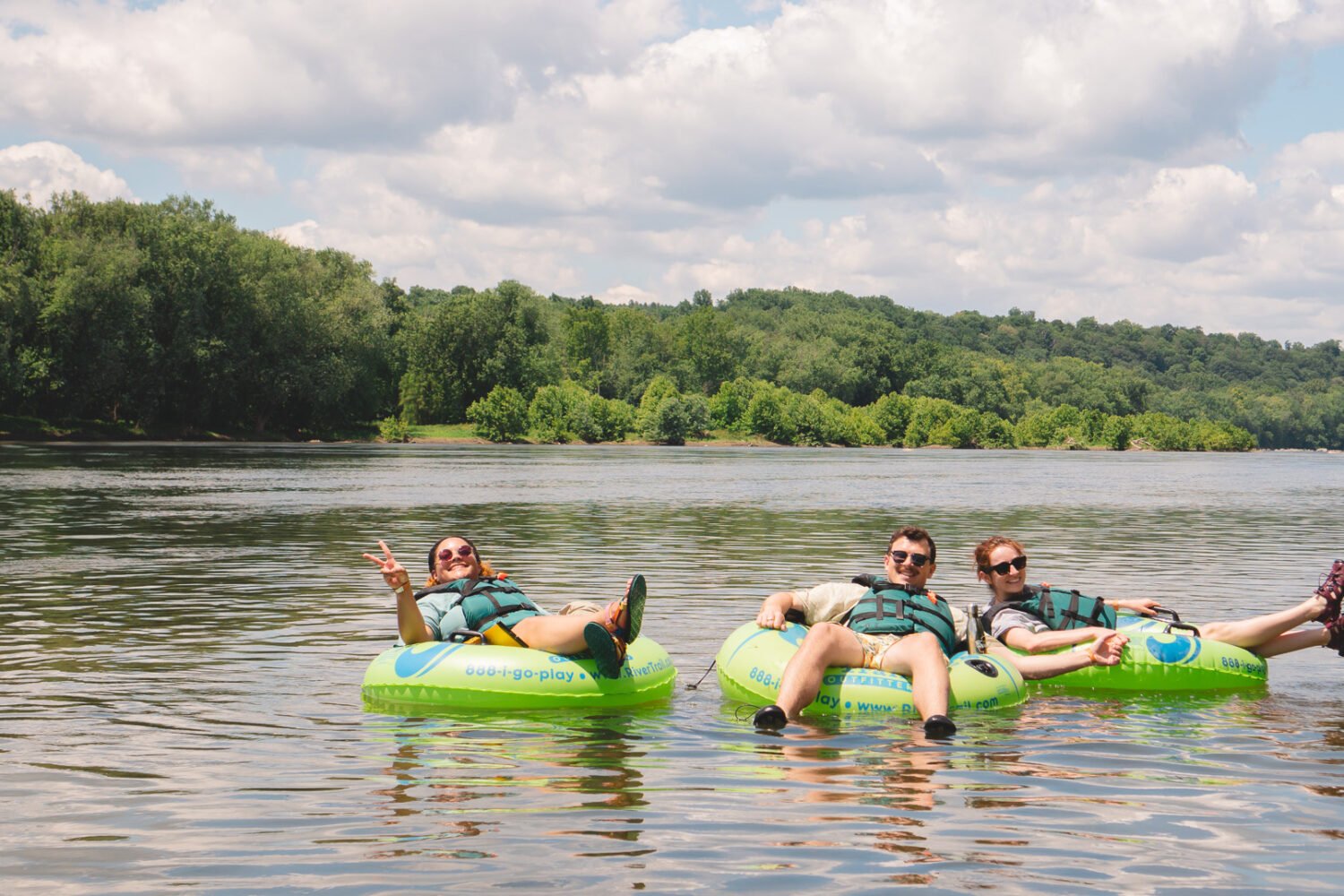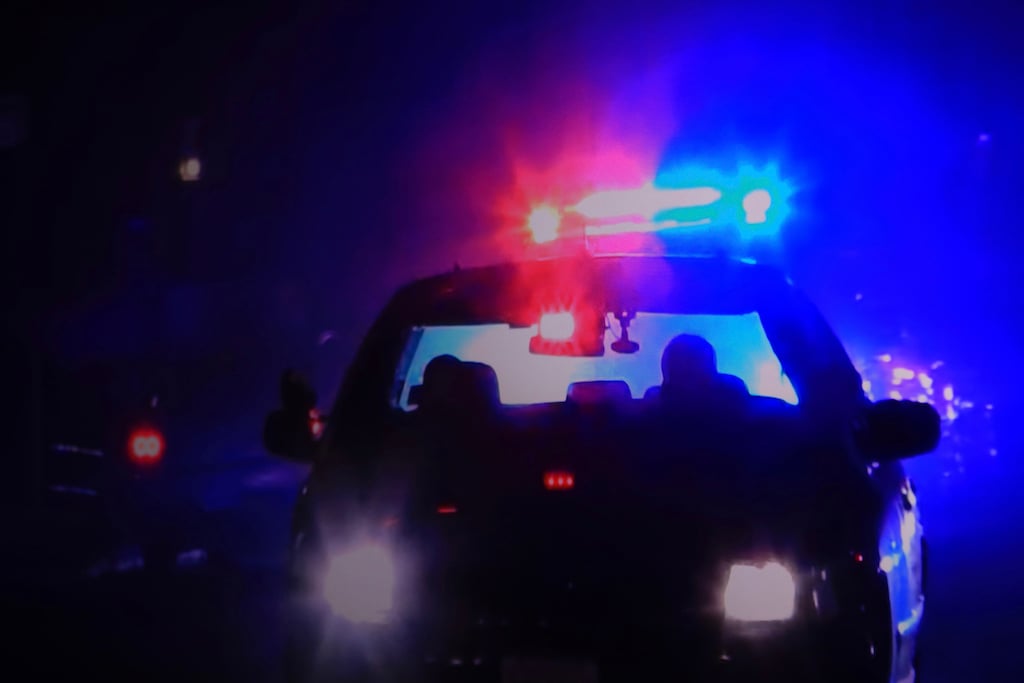At 13,000 feet, I lumber hunchbacked to the hatch, balance in its slender metal frame, and jump.
Growing up, my parents only ever asked that I try new things, give them a chance, and do my best. If I failed, I failed. No biggie. When, as a child, I was disqualified from the breaststroke competition during a swim meet, my parents asked if I knew what “DQ” stood for. Of course I did, I told them. No, they replied, “DQ” stood for “Dairy Queen,” and off we went to get ice cream. Failing need not be fatal, they taught.
So, it was neither a dare nor a death wish that led me to disembark a perfectly good plane mid-flight above southern Pennsylvania. It was just a decision I’d made that, every year, I should try to see the world around me with new eyes courtesy of a new experience. Skydiving seemed a good place to start.
At 12,000 feet, I began the routine I had been taught: Check the altimeter on my left wrist. Check my position over the landing zone. Check for correction signals from the instructor gripping the straps on the jumpsuit fabric around my forearm and thigh. Wait for the instructor’s thumbs-up. Exhale. Repeat.
The price of my decision to jump solo—without an instructor connected to me for the entire jump—was that I had to attend a pre-dawn orientation before my first jump to learn the mechanics of balancing and moving myself through space.
“Blue skies,” the jump instructors greeted me as I arrived, their warm and relaxed demeanor a sharp contrast with my own road-worn, over-caffeinated, bleary-eyed, jittery self. My nerves were so taut that you could tune a guitar on them.
The meaning of the greeting was not clear to me, but the words and the tone they were spoken in calmed me and readied me to focus. The instructors would be jumping with me, but at the appointed time, they would let go.
We began.
Each new jump came with a new skill to be accomplished during free fall. I made mistakes: On my first jump, I accidentally threw my rip cord into the air after pulling it, despite being forewarned not to. It would chew up the tractors when the farmers working the fields below ran over it, I was told.
I had difficulty remembering that in skydiving parlance, “flare” is not akin to jazz hands but rather a landing command to tug the chute and tuck the legs to slow down to an easy galloping stop.
But I kept my balance in flight and completed each task, and I soon graduated from jumping with two instructors to jumping with one.
At 11,000 feet, I recheck my position. I am falling well, directly over the landing zone, a regional airport surrounded by green farmland—cornfields. It is time to execute this jump’s skills.
My jaw and stomach clench, I angle my arms diagonally, smoothly turning myself to the left and then to the right. I push back my shoulder blades, stretching my legs long, and come face to face with my instructor. We grin stupidly at each other, our cheeks flapping. I tuck my legs into my stomach and roll over.
I exhale, exhilarated and relieved. I return to my balancing point, feeling almost still. I relish the moment. I did what I set out to do and am now way past ready to land.
At 10,000 feet, I get a thumbs-up from the one instructor falling beside me, confirming I am well-positioned. I wave her off, opening up air space around me to pull the ripcord and deploy my parachute.
Again and again, I pull. With all my might, I pull, trying not to lose my balanced position. The worst thing would be to start to tumble. But the cord won’t budge.
I look to where my instructor had been. She has not pulled her parachute either. She is falling with me, but farther off. I can’t make out what she is signaling. A sinking feeling inside whispers: It doesn’t matter. Then her shoot deploys, and she disappears above me.
This is not happening. Except it really, really is. I don’t look at my altimeter again. I look into the blue sky around me. And I look down, transfixed by the fast-approaching geometry that I know to be the black roof of a barn, a green lawn, a yellow cornfield.
I think of the kids that sit on the far edges of the landing field watching as the parachutes of the others I jumped with blossom like flowers falling from the sky.
I think of Wile E. Coyote, suspended briefly in the air, having chased the Road Runner off a cliff. He pulls out a sign. “Oops.”
I think back to the moment in the plane when the hatch was thrown open on my first jump and the air rushed in like a Mack truck. I hadn’t been prepared for the enormity of that moment, but I had tucked away my alarm, put my thoughts on mute, hunched over to the hatch, stepped into it, gripped the plane’s shell tightly in my hands, one palm flat on the inside panel, the other palm flat against the outside panel, and then let go. That was the hardest moment—until now.
I stop tugging on the rip cord. I tuck away my thoughts, find my mental balancing point, and let go.
I wait.
My breath is knocked out of me when my reserve parachute pops, catapulting me upright and back to my senses.
I had completely forgotten to pull my reserve chute. Luckily, it automatically deploys at a certain altitude. The force with which I was yanked upright left me with the sense that the reserve chute had given me a dummy slap: “You idiot. I’m your Plan B. I was here all along.”
I exhale, mortified, relieved, and really scared.
I see Wile E. Coyote scrambling in the air as if searching for a ladder we know isn’t there, holding a sign: “Ouch!” This is going to hurt.
How to navigate? Where to land? The drop zone is not in sight. Barn? Grass? Corn field? I think of “amber waves of grain” and aim for a corn field. But a word to the wise, corn doesn’t bend like waves. I bend. But at least I’m on the ground. Phew.
I get up and walk out of the cornfield with an index finger that will heal in six weeks angled in a new direction. I walk out of that corn field with a renewed appreciation for and love of corn. And I walk out of that cornfield with an internal compass that, like my finger, now points in a slightly different direction. I walk out with a mantra strung across my heart like prayer flags that flap in the wind. This one simply says, “Blue skies.”
Author’s note: The events written about happened several years ago; the altitudes may not be exact, and certain details are abridged for space. The parachute I jumped with and instructors were not in any way at fault; I was simply unable to pull my cord on the jump described.
Christine Pulfrey is a writer and editor who works for a Washington-area information service. She lives in Adams Morgan.










